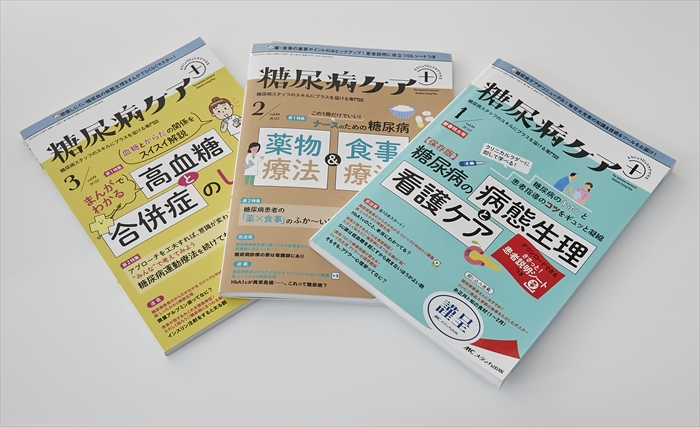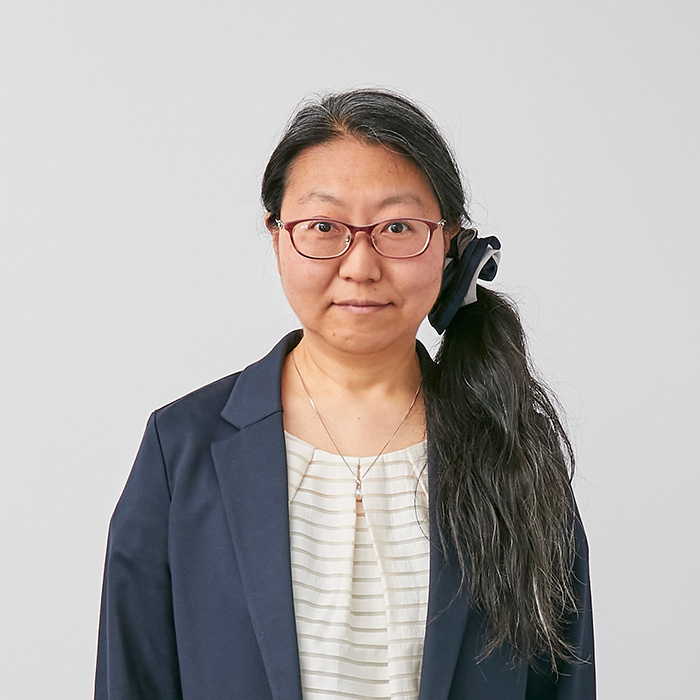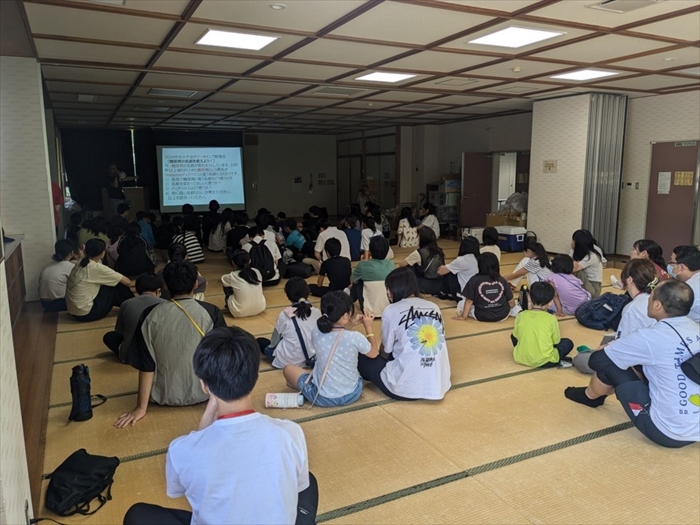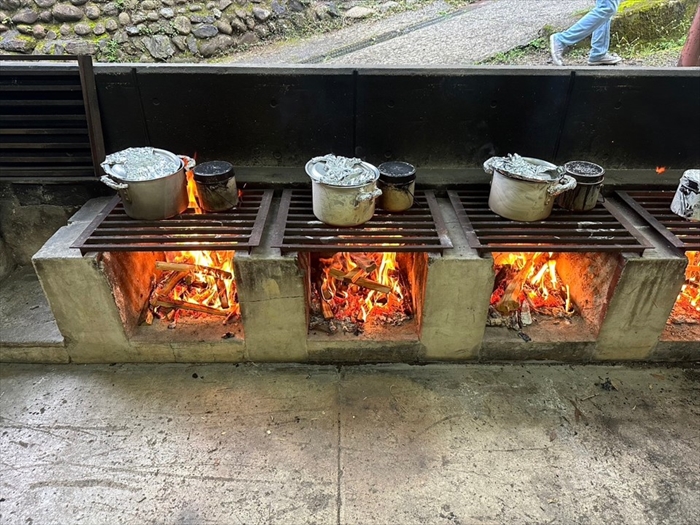
Research activities
Close-up
Aiming for the wellbeing of diabetes patients

Faculty of Health and Nutrition
Shoko Komatsu Associate Professor
Research topic: Carbohydrate counting method Food allergies
How counting carbs can change your daily life
Carbohydrate counting is a dietary therapy for people living with diabetes that was devised by a registered dietitian in the United States. This method focuses on the intake of carbohydrates (strictly speaking, the sugar in carbohydrates), which have a faster and greater impact on the rise in blood sugar (blood glucose concentration) after eating. Foods that contain a lot of sugar in a typical diet and are consumed in large amounts in one sitting are staple foods such as rice, bread, and noodles. Starch, a type of sugar contained in these foods, is broken down as it travels through the digestive tract and is eventually absorbed into the bloodstream from the small intestine as glucose, the smallest unit of sugar.
There are several types of diabetes, including type 1 and type 2, but carb counting can be used by anyone living with diabetes who is on a diet. For people living with type 1 diabetes, for whom insulin administration is essential to maintain life, carb counting is compatible with insulin therapy and is very important. Type 1 diabetes is a disease in which the beta cells of the pancreatic islets of Langerhans, which produce insulin, the only hormone that lowers blood sugar levels, are destroyed, causing a significant decrease in insulin secretion. People with type 1 diabetes need to take insulin for all factors that raise blood sugar levels, including food. Type 2 diabetes develops when lifestyle habits such as diet, physical activity, and stress affect either the genetic background of a type that is prone to reduced insulin secretion or a type that is difficult to exert the effects of insulin, or both.
Carbohydrate counting methods can be divided into "basic carb counting" and "advanced carb counting." The former is used to determine the amount of carbohydrates to be consumed per day and to divide it approximately equally among three meals in order to avoid a sudden rise in blood sugar levels after meals. Meanwhile, the latter is used by people who use insulin preparations, and is a method to estimate carbohydrate intake each time when the carbohydrate intake varies with each meal, and to determine the corresponding amount of insulin preparation. With either method, it is important to know whether individual foods or groups of similar foods are high in carbohydrates, and how much to eat at each meal.
I want to increase the enjoyment of my diet by giving myself more freedom
The "basic carb counting method" helps to manage blood sugar levels within an appropriate range by distributing carbohydrate intake, which has a large impact on blood sugar rise after meals, almost equally across three meals. This leads to a well-balanced nutritional content for the three meals, regardless of whether or not insulin is administered.

On the other hand, the "applied carb counting method" contributes to keeping blood glucose levels within the appropriate range by supplementing with insulin preparations corresponding to the carbohydrate intake of each food and dish, and allows people to enjoy greater freedom and diversity in their diet just like non-diabetic people. It can be used not only for everyday meals, but also for special occasions such as buffet-style meals, cake buffets, and wedding receptions. Before the introduction of the carb counting method, people with diabetes who were on insulin therapy relied on the energy content of foods and dishes (kilocalories are used in Japan) and decided the amount of insulin preparation based on their own eating experience. The nutrients that produce energy are carbohydrates, proteins, and lipids. Of these, it is the carbohydrates in carbohydrates that directly become blood sugar, so even if the food or dish has the same energy, the way blood sugar levels rise differs between those with high and low carbohydrates. When based only on energy content, there is a lack of information on foods and dishes that have never been eaten, so people with diabetes who are on insulin therapy find it difficult to expand their range by eating various foods and dishes, and their daily meal menus tend to be similar.
Whether you use the "basic carb counting" or "advanced carb counting" methods, there are no foods or dishes that you should basically avoid eating. The key is to pay attention to the amount of these foods you consume to minimize the frequency of sudden increases in blood sugar levels (blood sugar spikes) and hypoglycemia, and to avoid significant excesses or deficiencies in energy and nutrients. People with diabetes who have not developed diabetic complications can drink alcohol and snack as long as they don't consume too much on a daily basis. When I participated in a poster production project to introduce recommended convenience store products for a diabetes magazine, I included several products that can be used as snacks in addition to meals, which received a positive response.
Living better with illness
For many years, I have worked as a staff member at educational camps for children, primarily elementary school students, with type 1 diabetes together with students, and helped the children get used to carb counting through the meals they received at camp. In the process, I conducted a series of research focusing on whether there were any issues that made it difficult for them to learn the method, and if there were any issues, whether there were any ways to improve upon them.
In order to determine the amount of insulin to be taken for each meal using the "applied carb counting method," it is necessary to understand the four basic arithmetic operations learned in elementary school and how to use the carbohydrate insulin ratio and insulin effectiveness value, which are determined in consultation with the patient's doctor for each individual. The carbohydrate insulin ratio indicates the amount of insulin (meal insulin amount) that can lower blood glucose levels to pre-meal levels a few hours later for the amount of carbohydrate to be ingested. The insulin effectiveness value indicates the blood glucose level that can be lowered with one unit of insulin preparation (0.01 ml), and is used to adjust the amount of insulin for meals (increasing the amount if hyperglycemia is present before meals, and decreasing the amount if hypoglycemia is present) to replenish the blood glucose at the same time. A survey conducted during the educational camp to explore the challenges of learning the "applied carb counting method" revealed that the calculations in the above process were particularly difficult.
Furthermore, in Japan, type 1 diabetes often develops around the age of 10, and medical staff, led by the patient's doctor, support patients in self-management of blood sugar by learning insulin therapy and carb counting methods immediately after onset. However, as carb counting becomes more widespread in Japan, the books that people living with diabetes can use as reference for learning carb counting methods are at a level that adults can read and understand, and it has been difficult to commercially publish books that children can easily understand and learn from.
For this reason, I created a workbook-style booklet for children with type 1 diabetes that incorporates the content of dietary education given in elementary schools and allows them to enjoy learning the calculation process of the "advanced carb counting method," which was identified as a particular issue. I had the booklet handed out to children who developed type 1 diabetes at each medical institution that supports the type 1 diabetes patient association for which I serve as a consulting dietitian, and also distributed it to school nurses at all elementary schools in Osaka Prefecture. Taking this opportunity, I was contacted by a nutrition teacher at an elementary school in a certain city who said that they had gathered together to hold a study group on dietary therapy for type 1 diabetes and that they had used the booklet as a reference, which made me feel that the booklet production was also useful to those involved.

Author
Shoko Komatsu KOMATSU Shoko
Faculty of Health and Nutrition
Associate Professor
Research Field
Home Economics and Lifestyle Medicine, dentistry, and pharmacy Nursing, Health and Hygiene
Research Topics
Carbohydrate Counting Method Food allergies


